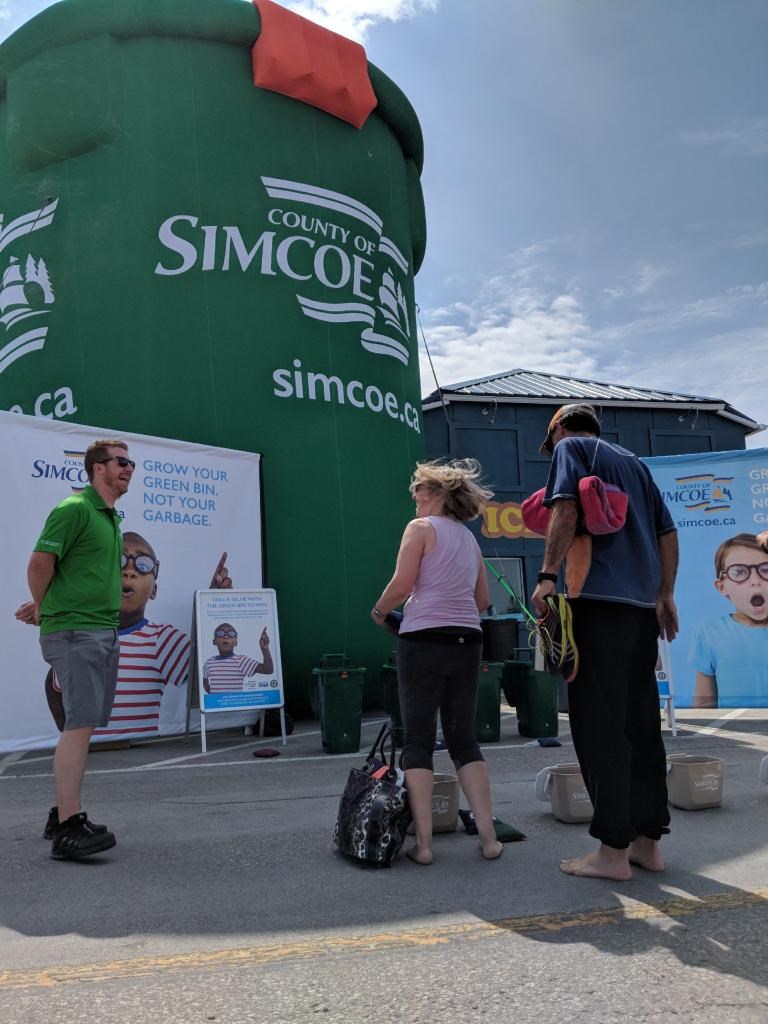Our garbage is a terrible thing to waste.
That’s the thought process behind the province’s push toward the Waste-Free Ontario Act, and the county is hopping onboard to do their part.
Simcoe County has, through a number of projects, attempted to get residents to consider that not all garbage is actually trash – much of it can be reused, recycled and repurposed - and diverted from landfills.
The Waste-Free Ontario Act was first proposed in 2004 by the Ontario Liberal government, but it wasn’t until September 2008 that Simcoe County started organic green bin collection.
Since its inception about 10 years ago, the county’s green bin program has diverted almost 115,000 tonnes of organics.
“Approximately 60 per cent of households in the county utilize a green bin to divert organics from disposal,” says Rob McCullough, director of solid waste management with the County of Simcoe.
Despite this, only about 40 per cent of the available organics are making their way into the green bin; the rest is going into the garbage.
“We need to grow the green bin, not the garbage. This is our greatest opportunity to increase diversion,” says McCullough.
McCullough points to the many reasons organics at the landfill can be detrimental to the environment, including limited landfill space, reduction of greenhouse gas production in addition to the possibility of contamination when organics break down and leech into groundwater. He also bestows the virtues of using organics to create fertilizer and compost which are healthy for the environment and can help reverse climate change.
The county is encouraging more green bin usage this summer with a series of ads and a giant inflatable green bin that is out and about at local events across the county.
But it's not just about organics. Another more recent diversion effort is the annual battery collection.
The first yearly battery collection in the county occurred in November 2014.
In 2017 alone, over 24,000 kilograms of batteries were collected through the curbside program.
“Waste audits indicate that the amount of batteries in the garbage has declined by 24 per cent since the curbside program was implemented,” says McCullough.
However, the amount of batteries collected at the county’s household hazardous waste facilities has not declined since the inception of the curbside battery collection; it has actually slightly increased.
“We believe that the curbside program has also increased awareness, further reducing the inappropriate disposal of batteries,” says McCullough.
While Simcoe County is the second highest diverting municipality in Ontario, the amount of waste each person generates is still increasing by about 1 per cent every year, so the need remains to constantly be doing more. The county has more than 20 diversion programs in place for various materials at waste management facilities.
More than 70 per cent of materials delivered by residents and businesses to waste facilities are currently diverted from disposal.
Visit your local Village Media website tomorrow for Part 2 of this series, where we look at what the county is presently doing to divert more waste.
The Waste-Free Ontario Act: Building the circular economy
In late 2016, Ontario proclaimed the Waste Free Ontario Act.
This piece of legislation aimed to tackle the problem of waste generation by increasing resource recovery and moving toward a circular economy.
A circular economy is an economy in which participants strive to:
-
minimize the use of raw materials;
-
maximize the useful life of materials and other resources through resource recovery; and
-
minimize waste generated at the end-of-life of products and packaging.
The goal of the legislation is a zero-waste Ontario with zero greenhouse gas emissions from the waste sector.
The strategy outlined the actions Ontario will take in the coming years.
Source: Glen Murray, Minister of the Environment and Climate Change (https://www.ontario.ca/page/strategy-waste-free-ontario-building-circular-economy)
